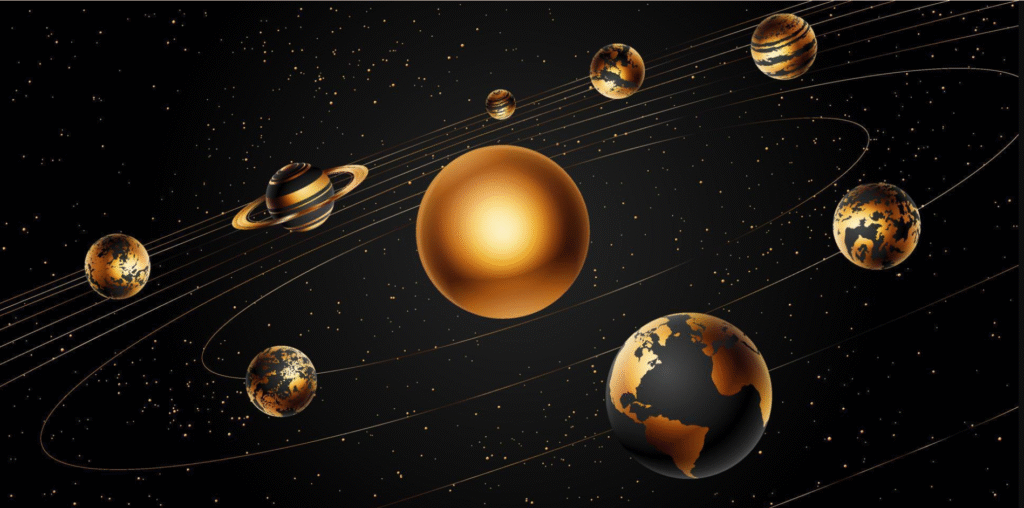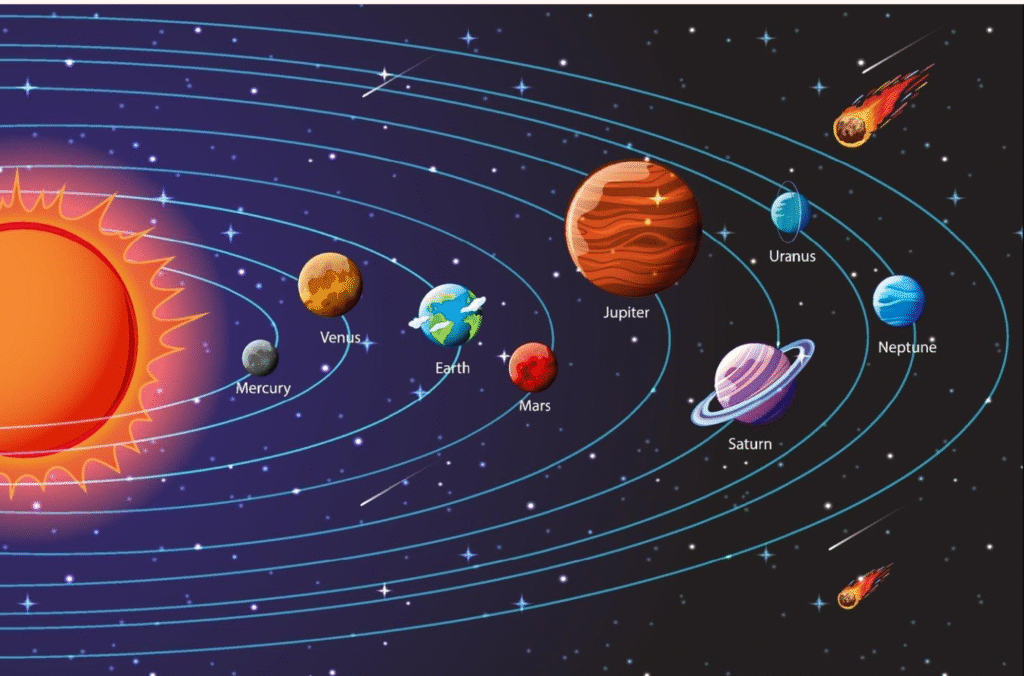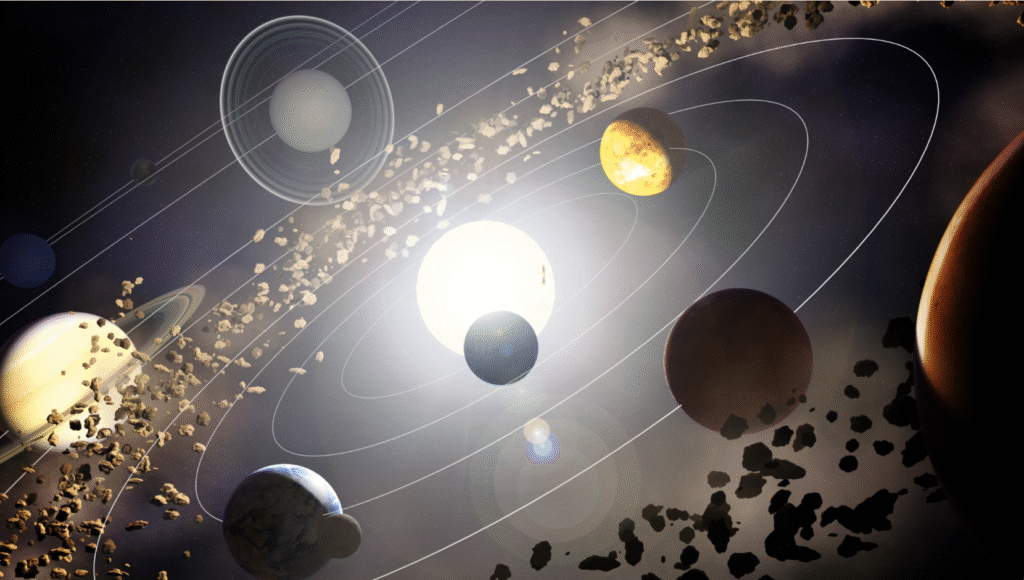The solar system illustration is more than just a picture of planets orbiting the Sun; it’s a visual story of our cosmic origins. Each planet’s path in the artwork represents billions of years of evolution and movement within space. Scientists believe that about 4.6 billion years ago, a giant cloud of gas and dust collapsed under gravity, forming the Sun and a swirling disk around it. From that disk, the planets were born. This artistic depiction helps explain how our planetary system came together, from the rocky inner planets to the gas giants beyond. Every detail in this illustration, from Mercury’s swift orbit to Neptune’s distant trail, shows the beauty of balance in space. It captures not only distance but also the relationship between gravity and creation, reminding us how every planet plays its part in the vast solar structure.










The Connection Between Art and Science in the Solar System Illustration
The solar system illustration also connects art and science, allowing people to visualize what’s otherwise invisible. Through it, we can understand theories of planet formation, including accretion, where dust and gas gradually clump together to create massive worlds. Scientists use these visuals to trace the age and order of planets, studying surfaces, craters, and materials collected by missions. Each updated version of the solar system illustration reflects new discoveries, like hidden moons, planetary rings, or asteroid belts. It’s not just a diagram, it’s a tool for education and discovery, helping learners grasp how the solar system works.
Whether used in classrooms or research, it bridges imagination with evidence. The illustration inspires curiosity, encouraging people to look beyond Earth and think about where our planet fits in the grand design. This is why it remains a timeless representation of a perfect blend of art, astronomy, and evolution that continues to define how we see the universe today.
